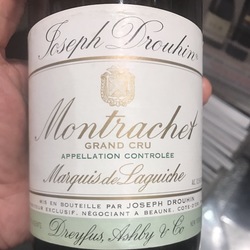País Vasco, Spain
La Rioja Alta
Reserva Viña Ardanza Rioja Tempranillo Garnacha 2019
Heavenly, fruit aroma, and smooth palate- very fruit forward, lower acidity and tannins, but balanced. Delicious! — 23 days ago
R. López de Heredia
Viña Bosconia Reserva Rioja Tempranillo Blend 2004
Always love the wines from LdH and this is no exception. Very nice at just over 20 years of age. Definitely secondary, no need to wait longer. Opened for a few hours before service but no decant. Red berry fruit, nice seamlessness, great acid and a long finish. Perfect pairing with roast chickens on Thanksgiving part 2. — 23 days ago
La Rioja Alta
Viña Alberdi Reserva Rioja Tempranillo 2013
Black current, dried black cherry and slight tobacco. Very light tannins.
Excellent with beef and stews. — a day ago
Bodegas Beronia
Reserva Rioja Tempranillo Blend
Rioja sincero, honesto. Clásico y rico — 18 hours ago







"Odedi"
Dark ruby in color with a wide reddish rim.
Beautiful nose of black currants, plums, licorice, light oak, spices, chocolates, earth, eucalyptus and black pepper.
Medium plus in body with medium plus acidity.
Dry on the palate with currants, plums, cooked cherries, spices, oak, licorice, tobacco, herbs, earth, dark chocolates, coffee and peppercorn.
Medium finish with fine grained tannins and tangy raspberries.
This 7 year old Rioja is starting to drink very nicely now. Elegant and nicely balanced. Complex and entertaining.
Will continue to age nicely in the next 5 to 7 years.
Good by itself as a sipping wine or with food.
14% alcohol by volume.
91 points.
$20. — 18 days ago